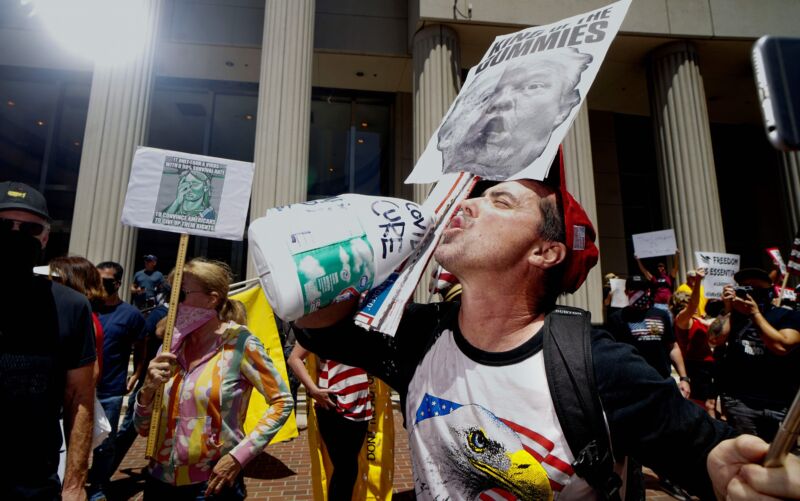38% rise in bleach poisoning predates Trump’s suggestion, data shows

Enlarge / A demonstrator holding an anti-Trump sign pretends to drink from a bottle of bleach during a rally to re-open California and against Stay-At-Home directives on May 1, 2020 in San Diego, California. (credit: SANDY HUFFAKER/AFP via Getty Images)
On April 23, President Donald Trump told a press conference that among other things scientists had learned about the SARS-CoV-2 virus was the fact that it could be neutralized by sunlight or bleach. During the conference's Q&A session, he went further, suggesting that knowledge could somehow be used to disinfect the lungs of COVID-19 patients, saying:
And then I see the disinfectant, where it knocks it out in a minute. One minute. And is there a way we can do something like that, by injection inside or almost a cleaning. Because you see it gets in the lungs and it does a tremendous number on the lungs. So it would be interesting to check that. So, that, you're going to have to use medical doctors with. But it sounds-it sounds interesting to me.
So we'll see. But the whole concept of the light, the way it kills it in one minute, that's-that's pretty powerful.
The freewheeling answer led to widespread mockery and much concern that such advice, coming from so prominent a figure, could cause frightened Americans to ingest bleach as a way to ward off the disease. But on Tuesday, the American Association of Poison Control Centers published National Poison Data System data collected from around the country, and it exonerates Trump.
Yes, there has been a significant rise in calls to poison control centers concerning exposure to bleach, disinfectants, and also hand sanitizer-something we reported on following Trump's remarks. But the data clearly shows that the rise in these exposures began in March-not six weeks later when Trump made his remarks.
Read 4 remaining paragraphs | Comments